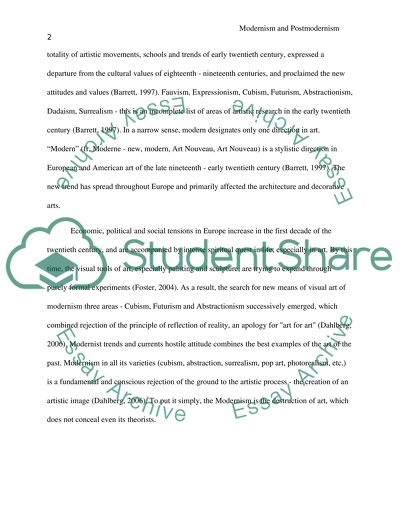Cite this document
(“Modernism and Postmodernism Essay Example | Topics and Well Written Essays - 2250 words”, n.d.)
Retrieved from https://studentshare.org/culture/1701616-modernism-and-postmodernism
Retrieved from https://studentshare.org/culture/1701616-modernism-and-postmodernism
(Modernism and Postmodernism Essay Example | Topics and Well Written Essays - 2250 Words)
https://studentshare.org/culture/1701616-modernism-and-postmodernism.
https://studentshare.org/culture/1701616-modernism-and-postmodernism.
“Modernism and Postmodernism Essay Example | Topics and Well Written Essays - 2250 Words”, n.d. https://studentshare.org/culture/1701616-modernism-and-postmodernism.


